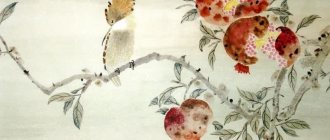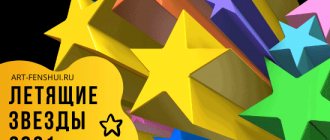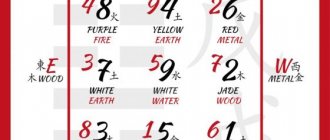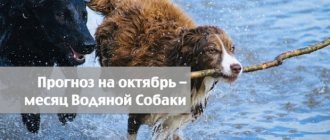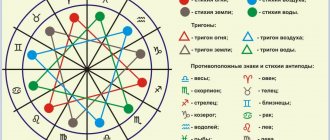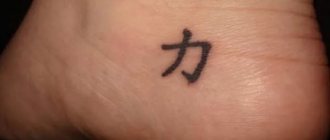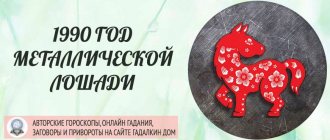dolio.ru » Feng Shui » Feng Shui bull talisman: meaning and rules of use
The bull is a strong and powerful animal, which everyone associates with incredible strength and assertiveness. That is why it is used in many cultures as a symbol of success and prosperity. Feng Shui was no exception, according to which the bull talisman brings stability and career advancement to its owners. But for this to really be the case, you need to choose the right figurine correctly and place it in the most suitable sector of the house.
Symbol meaning
Alberto Rodríguez Santana/Unsplash
The animal represents:
- Physical strength and endurance.
- Will and desire to win.
- Self confidence.
- Determination.
- Bravery.
- Determination.
- Calm.
- Patience.
- Overcoming obstacles.
- Hard work.
- Stability.
- Prosperity, financial well-being.
- Conservatism.
- Good health. It’s not for nothing that they say: healthy as a bull.
- Sexuality and fertility.
Appearance of God Veles
The image of Veles is associated with two representatives of the animal world: the bear and the bull.
History says that the Slavs kept a bear, which they used during rituals. The Slavic patron Volos also most often appeared to people in the guise of a large bear, in whose paws there was a large staff.
Among the ancient Slavs, Volos looks like an older man, has a long gray beard reaching to the ground and black eyes. God Veles is wearing black and white clothes. Veles can be considered not a warrior, but a magician, since only magic gives the opportunity to influence and receive protection.
Place in the house, types and effects of the bull according to Feng Shui
Since the symbol emits powerful yang energy, the best rooms for the figurine are the living room, dining room, office (workshop), as well as a computer or desk where you spend a lot of time. Of course, you can keep the figurine not only at home, but also at your workplace in the office. The most suitable places for a talisman are the career sector (north) and the wealth zone (southeast).
Let us now consider the most common images of a horned beast, which can be seen in shops and souvenir shops. By the way, in addition to the figurine, any image can be used as a talisman. According to Feng Shui, even a soft toy in the shape of a bull will do.
| View | What does it help with? | Where to put |
| powerful bull with large horns | achieving good results in any type of activity, authority, power, respect from colleagues and partners, original ideas and solutions | quarry zone (north) |
| an animal with a bowed head and protruding horns | strong will, high performance, making the right decisions and happy changes in life, thanks to perseverance and work | quarry zone (north) |
| black bull | career success, assistance in finding reliable business partners and concluding profitable deals | quarry zone (north) |
| gray animal figurine | getting rid of aggression, balanced character, patience and prudence | quarry zone (north) |
| brown bull | leadership qualities and enthusiasm | quarry zone (north) |
| gold or gilded metal figurine of a bull with coins | wealth and ever-growing income | wealth zone (southeast) |
| beast loaded with gold or standing on money | wealth and ever-growing income | wealth zone (southeast) |
| a pair of animals lying peacefully next to each other | support from friends, harmony in relationships with others, the ability to notice and take advantage of opportunities in time | any bagua sector |
Cautions in using the talisman:
- The ox is an energetic animal, so you should not decorate Yin rooms with its image: bedroom, nursery, kitchen, pantry, dressing room, bathroom or toilet.
- Don’t use an image of a bull dragging a load (unless it’s money, of course) or pulling a plow. All this symbolizes hard, monotonous work and being overloaded with problems.
Russian soulfulness
Everyone knows the Russian folk tale about Kroshechka-Khavroshechka. The main character there had an assistant - the cow Pestrukha, which symbolizes a mother protecting her child from evil people, in particular from the stepmother. In the fairy tale, the main character calls Pestrukha Mother Cow. The cow helps Tiny Khavroshechka even after death, but for this the heroine should not eat cow meat, but bury the helper’s bones in the garden and water them daily. An apple tree soon grows at the burial site, thanks to which Tiny Khavroshechka finds an excellent groom and marries him, finally leaving the house of her evil stepmother.
Illustration from the fairy tale about Tiny Khavroshechka and her faithful cow.
You can talk about the role of bulls and cows in various beliefs, religions and mythologies for a very long time. Here we can recall both Zeus the bull and the hair-eyed goddess Hera, the Sumerian bull god Sin, who was the embodiment of the month. From all this the conclusion suggests itself that the role of this animal in the life of every nation is great. May the year of the ox bring people strength, perseverance, kindness and wealth. In turn, people need to become more merciful and kinder towards these wonderful animals.
If you find an error, please select a piece of text and press Ctrl+Enter.
Feng Shui bull figurine material
As I already said, even a soft toy or a poster with an image of a horned animal will work as a talisman, but it is better to choose a figurine made of a mineral, a valuable type of wood or metal, such as gold or bronze. In this case, the material transfers its energy to the talisman, thereby strengthening it.
Nastya Dulhiier/Unsplash
The bull made of mahogany and other valuable woods serves as a symbol of male sexuality, high potency and fertility. At the same time, the horned powerful animal embodies female strength and fertility. That is why the talisman will bring good luck to a couple who wants to have a child. It is also very good to purchase a small statue of an animal made from an ornamental stone that you really like or suits your horoscope.
Influence
Volos is responsible for cyclical development, therefore the main spheres of its influence are the economic and livestock sectors, as well as agriculture. Therefore, Veles was considered the most popular God of the second circle among the Slavic peoples.
In the ancient Slavic world, Volos also patronized poets and scientists, as he was the deity of wisdom and prudence. It was believed that people with creative abilities are under the protection of Veles, and he always helps them in developing their talent.
Magic properties
A talisman dedicated to Veles is capable of pushing a person along the path of development. If it seems that the limit has been reached, you need to get a talisman. It will help you raise the bar and rise above yourself. Sacred power will lead to happiness through lifestyle changes or travel.
The following magical qualities of the image are known:
- Ability to resolve family conflicts. No one can remain calm on the road if all is not well at home. In order for the deity to protect his relatives, travelers brought him gifts.
- Ensuring fertility. A farmer protected by a symbol is successful in keeping livestock and growing plants.
- Enhancing male power. The Slavs considered the divine principle to be purely masculine.
The corner of the sign concentrates cosmic power
The pointed corner of the amulet allows it to attract and concentrate cosmic energy. Due to this, the owner is purposeful, achieves his plans, and believes in himself. His will is unbending, his luck is faithful.
A magical product will protect you from meeting an enemy, an envious person, and will protect you from harm.
The corner of the sign concentrates cosmic power
How to clean and charge an amulet
Rituals are carried out outdoors, in a spruce forest. Salt is used for cleaning. The product is placed in a container with the product for a day. Can be put in salty spring water. Having completed the purification, the water is drained and the salt is burned.
The activation ritual is scheduled for the evening. Subsequence:
- Place the item on the stump.
- Place gifts to the deity (kvass) nearby.
- Mentally turn to God, telling your wish.
- Squeeze the amulet with your hand, imbuing it with inner strength.
- Pour the gift onto the ground.
- Leave without looking back.
Capabilities
Hair makes it possible to set in motion everything that surrounds it, and it cannot stop such a running cyclic action. The deity can transform into different representatives of the animal world, but most often he appears to people in the form of a bear, which is much larger than usual.
Despite the fact that all deities had magical powers, Volos had special magical abilities. He is capable of creating a variety of illusions and changing anything in the surrounding space at his own discretion, but such changes could not last long (one cycle), since divine power is tied to movement in the cycle.
Holidays
Holidays when God Volos was honored:
- from the twenty-fifth of December to the sixth of January - Great Veles Christmastide;
- from the fourth to the tenth of February - Small Veles Christmastide;
- the eleventh of February is Veles Day;
- from the twentieth to the twenty-fifth of March - Komoeditsa;
- from the twentieth to the twenty-fifth of June - Kupala holidays;
- from the twentieth to the twenty-fifth of September – Tausen.
The entire Slavic family treated the deities with honor, since the Gods always helped people, and they sacredly believed in their powerful power. God Volos is no exception, who was considered a special deity who attracts well-being and vital energy.
References
- Delbridge, A. et al., Macquarie Dictionary, Book Printer, Australia, 1991.
- Sheena Coupe (ed.), Frontier Country, Vol.
1 (Weldon Russell Publishing, Willoughby, 1989), ISBN 1-875202-01-3 - “Sure Ways to Lose Money on Your Livestock.” spiritwoodstockyards.ca. Retrieved 2012-08-06.
- K. J. C. Phillips, Principles of Animal Husbandry
(2010), p. 50. - Woods, Kathy (July 30, 2015). "How to Determine Whether Cattle Are Steers, Steers, Cows or Heifers - Farm and Dairy." Farm and dairy industry
. Retrieved December 27, 2022. - Klaus-Dieter Budras et al., Anatomy of Cattle: An Illustrated Text
(2003), p. 36. - "Muley." Free dictionary
. Retrieved December 27, 2022. - TIM TRAINOR Montana Standard (April 28, 2010). "An example of a large bull." missoulian.com. Retrieved 2012-08-06.
- "A. P. Carter, P. D. P. Wood and Penelope A. Wright (1980), The relationship between scrotal circumference, body weight and semen production in cattle, Journal of Reproductive Fertility
,
59
, pp. 447–451." Archived from the original (PDF) on 2020-05-10. Retrieved 2012-08-06. - "Jayawardhana (2006), Testicular size is an indicator of fertility in bulls
, Australian Government Agnote K44" (PDF).
Northern Territory of Australia
. Agnote. Archived from the original (PDF) on May 28, 2016. Retrieved January 10, 2022. - Sarkar, A. (2003). Sexual behavior of animals
. Discovery Publishing. ISBN 978-81-7141-746-9. - Rees, William O. (2009-03-04). Functional Anatomy and Physiology of Domestic Animals - William O. Rees - Google Boeken
. ISBN 978-0-8138-1451-3. Retrieved 2012-12-02. - Gillespie, James R.; Flanders, Frank (2009-01-28). Modern Animal and Poultry Raising - James R. Gillespie, Frank B. Flanders - Google Boeken
. ISBN 978-1-4283-1808-3. Retrieved 2012-12-02. - Fubini, Susan L; Ducharme, Norm (2004-01-15). Surgery of farm animals
. ISBN 1-4160-6465-6. - Price, Edward O (2008). Principles and Applications of Pet Behavior: An Introductory Text
. ISBN 978-1-78064-055-6. - Descoteaux, Luke; Colloton, Jill; Gnemmi, Giovanni (24 September 2009). Practical atlas of reproductive ultrasonography of ruminants and camelids
. ISBN 9780813808079. Retrieved 2013-06-22. - Scott, Philip; Penny, Colin D.; McRae, Alastair (07/15/2011). Cattle Medicine - Philip R. Scott, Colin D. Penney, Alastair Macrae
. ISBN 9781840766110. Retrieved 2013-06-30. - McIntee, Mark (1990-08-28). Reproductive pathology of domestic mammals - Mark McIntee
. ISBN 9780323138048. Retrieved 2013-06-30. - Jackson, Peter; Cockcroft, Peter (2008-04-15). Clinical examination of farm animals - Peter Jackson, Peter Cockcroft
. ISBN 9781405147392. Retrieved 2013-06-30. - ^ a b
Heide Schatten;
Gheorghe M. Constantinescu (21 March 2008). Comparative Reproductive Biology
. John Wiley and Sons. ISBN 978-0-470-39025-2. - "Longhorn_Information - processing." ITLA. Archived from the original on 2010-05-11. Retrieved 2010-03-28.
- ^ a b Calf Castration Fact Sheet
, Ontario Ministry of Agriculture, June 2007. - "Biker slaughter of beef cattle." New South Wales Government
. Department of Primary Industries. September 13, 2007. Retrieved January 10, 2022. - " Successful Livestock Handling
" (PDF).
Canadian Agricultural Administration
. 2000. Archived from the original (PDF) on March 12, 2016. Retrieved January 10, 2022. - "Larry D. Jacobson, Extension Agricultural Specialist, Safe Work Practices on Dairy Farms
, University of Minnesota Extension Service (1989)."
University of Minnesota Extension
. www.extension.umn.edu. Archived from the original on July 12, 2013. Retrieved January 10, 2022. In the last 10 years, 12 farmers in Minnesota have been gored and gored to death by dairy bulls. - Cumberland County (PA) Sentinel, Shippensburg, PA, February 12, 2008. A Southampton County, Michigan farmer was killed by a 2,000-pound Holstein bull in Cumberland County, Pennsylvania, in February 2008.
- The Reading [Pennsylvania] Eagle March 1, 2010 On February 28, 2010, a farmer near Reading, Pennsylvania, was trampled and mauled to death by a 2,000-pound black Angus bull that friends had urged him to get rid of after previous failures. Michelle Park, "Bull Attacks, Kills South Heidelberg Farm Owner."
- Alvin H. Clement, We Need More Prisons
, The Writer's Club Press, New York (1984–87), pp. 79–80. A humorous account of rehoming a cow with a neighbor's Jersey bull for breeding purposes and using the bull's 12-foot staff to control a running bull that had already spotted the cow. - O. C. Gregg, ed., Minnesota Farmer's Institute, Yearbook No. 15, Pioneer Press, St. Paul, Minnesota (1902), pp. 125; James Way, James Manufacturing Co., Ft. Atkinson, Wisconsin. (1914), p. 103.
- Useful Information for Dairymen, Farmer
, Webb Publishing Co., St. Paul, Minnesota, March 12, 1927, p. 6. - USDA, Year Book 1922, Government Printing Office, Washington, D.C. (1922), pp. 325-28 (noting a national farm bull population of over 600,000 "bush" bulls in addition to a long-term supply of "purebred" "bulls" )
- O. C. Gregg, Ed., Minnesota Farmers' Institute Yearbook No. 15, Pioneer Press, St. Paul, Minnesota (1902), pp. 129-32 (recommendations for the management and testing of sires for the improvement of dairy herds).
- K. J. C. Phillips, Principles of Animal Husbandry
(2010), p. 121. - "John S. Barrett (1991), "The Economic Role of Cattle in Communal Farming Systems in Zimbabwe," will be published in the Zimbabwe Veterinary Journal
, p. 10" (PDF). Retrieved 2012-08-06. - " Animal Power Project Overview
, Agricultural Engineering Branch, Agricultural Support Systems Division, Food and Agriculture Organization of the United Nations."
Fiat Panis
. Archived from the original on July 1, 2010. Retrieved January 10, 2018. - Capretto, Lisa (June 10, 2014). “An unusual pet that upset Charo’s neighbors (video).” Huffington Post
. Retrieved January 10, 2022. - Arthur Fox-Davies, A Complete Guide to Heraldry
, TC and EC Jack, London, 1909, 205-207, https://archive.org/details/completeguidetoh00foxduoft. - “Bull Run in Pamplona | RunningoftheBulls.com.” Retrieved 2020-11-13.
Features of use
A magical ornament is appropriate as a personal or household amulet. Popular options:
- symbol on the door frame;
- medallion;
- bracelet;
- tattoo.
Decorating a door protects your home from enemies and sudden misfortune. A sign is a shield that does not allow discord to pass through. If there is coziness at home, relatives understand each other, and the ornament strengthens good relationships. Thanks to the divine pattern, the home is filled with purity, inaccessible to vices.
Veles's house sign protects from evil and enemies
A pendant, necklace, medallion is a popular option for a personal amulet. Such a talisman helps in everyday life, gives a person strength, strengthens character and will. It opens the heart to divine energy. A person under the influence of the sign feels lightness and is aware of the laws that govern the world. The medallion creates a unique aura that protects against negativity, threats, and bad information.
A bracelet is the second most popular type of personal amulet. It gives the hands special strength, awakens talent, and strengthens character. The blood vessels in the hands carry the positive energy of the symbol throughout the body, giving a person power.
A tattoo is a classic option for applying a symbol. The sign is powerful, filled with energy throughout a person’s life. It can change the owner's character. It is believed that it promotes love success and career endeavors.
Pendant is the most popular form of talisman
